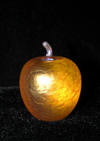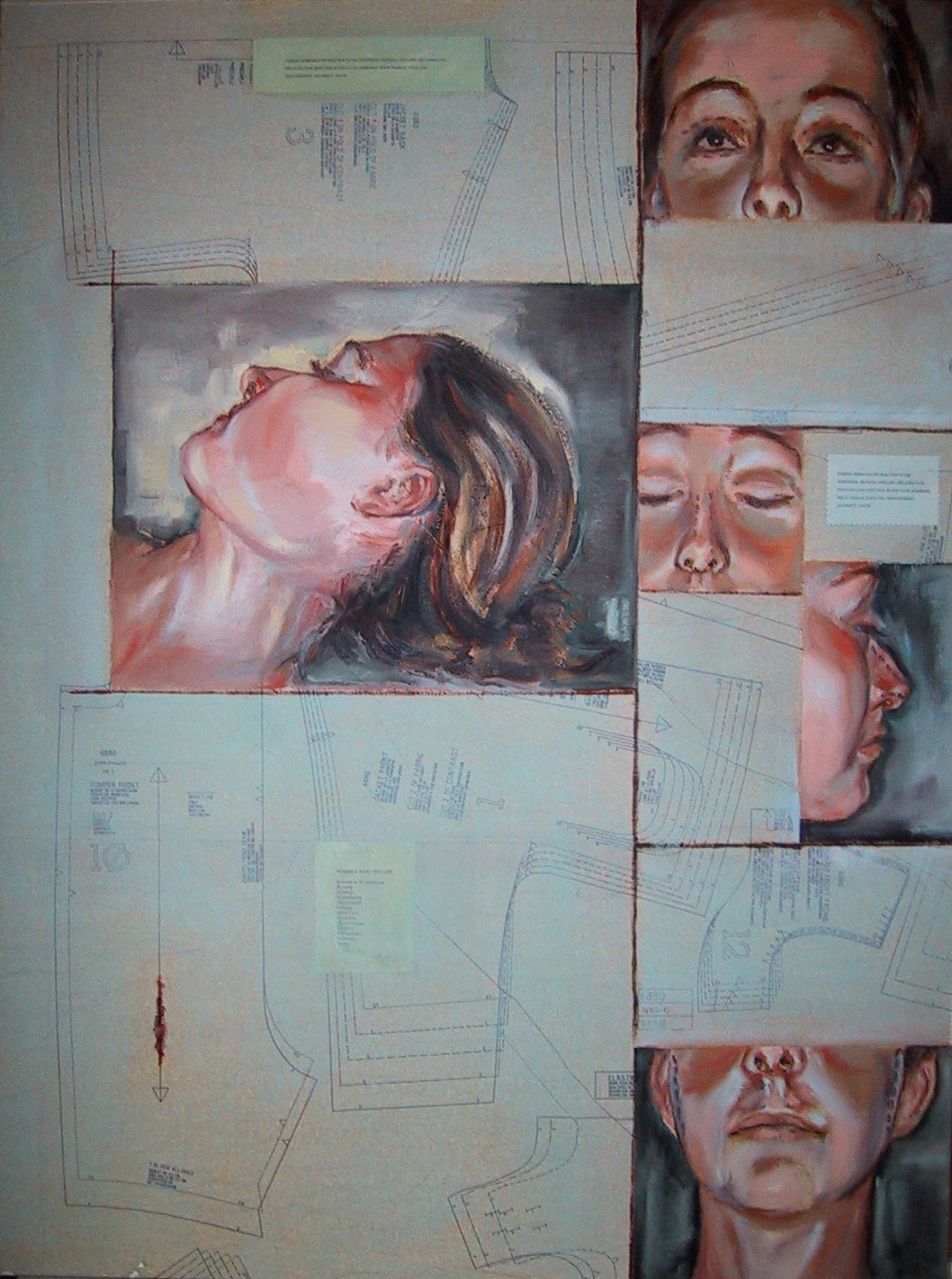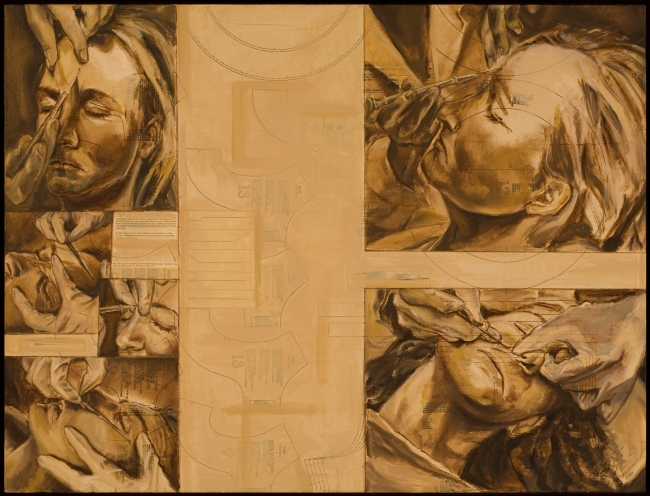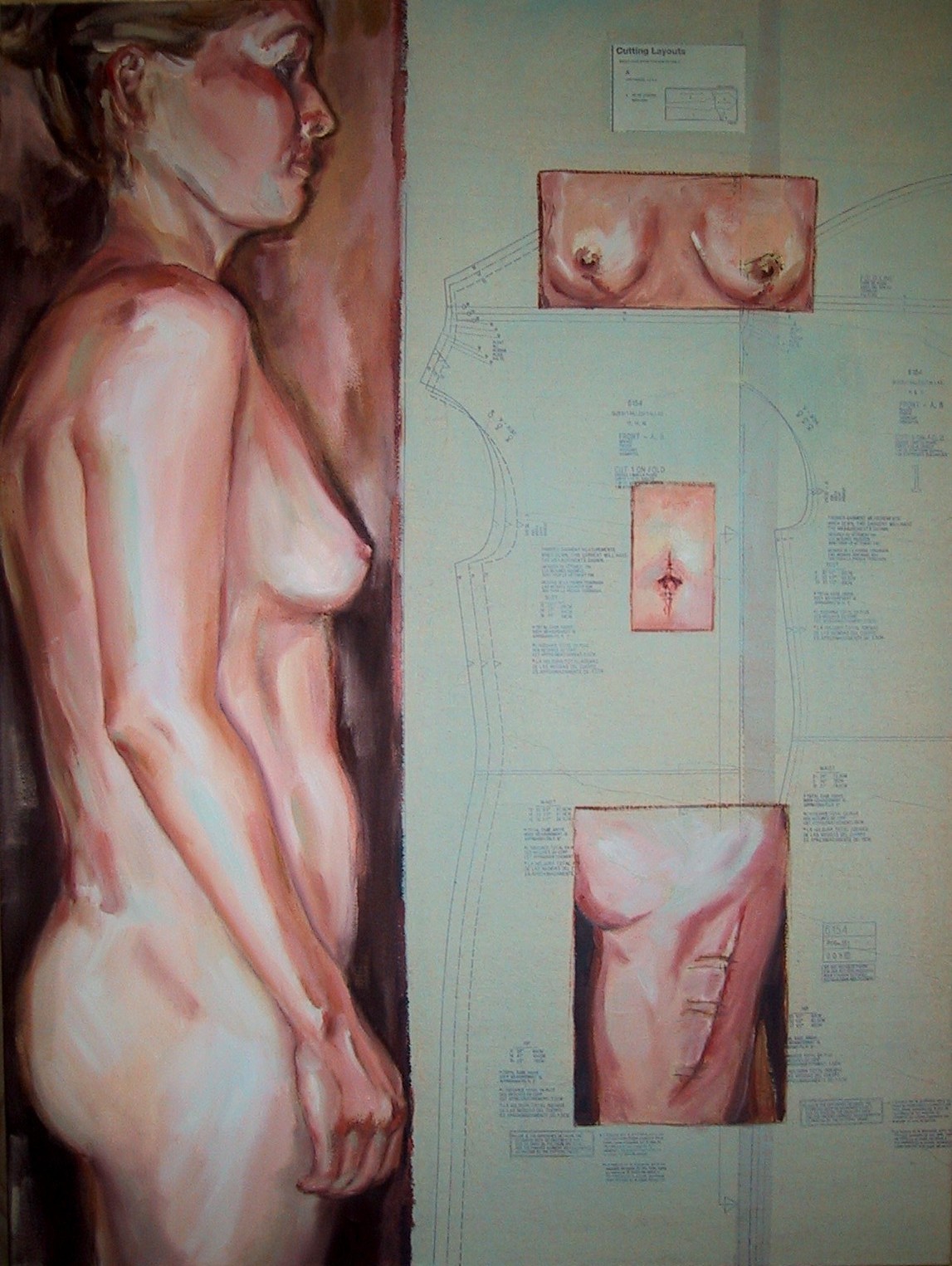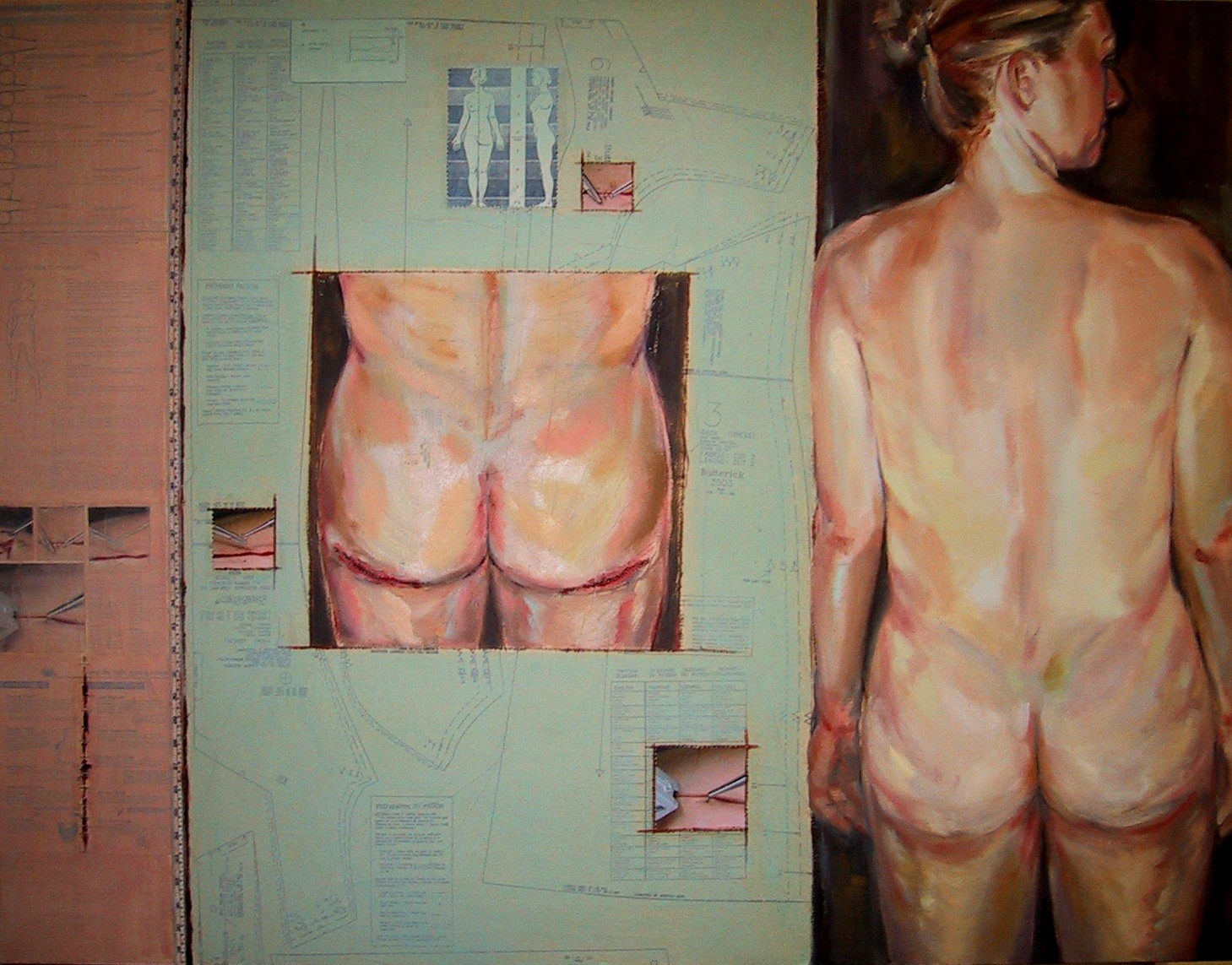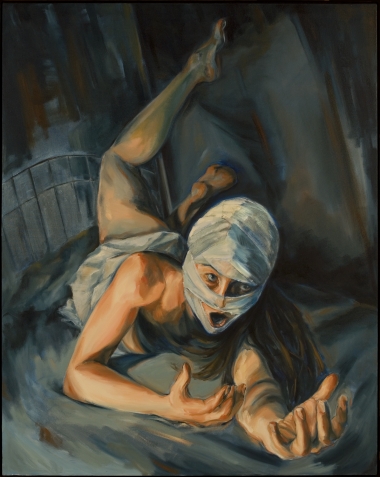IN QUEST OF THE GOLDEN APPLE
(Visualizing the Beautiful and the Sublime)
A Caryatid Questions Her Role
Charcoal on Paper, 40" x 50"
ARTIST STATEMENT
Shelley Stevens
IN QUEST OF THE GOLDEN APPLE: Visualizing the Beautiful and the Sublime
Webster’s Dictionary defines the word compete as “to try to get what others also seek and which all cannot have”. Competition is a part of our society, and willing or unwilling, we are all contestants. If one is not judged a winner, does that make one a loser? My images depict a feminine perspective in the portrayal of struggles that women (in particular) experience in their quest to fare well in these competitive arenas. Exploration of this natural inclination to judge and be judged is the thesis of this work.
Humans’ natural tendencies toward a system of hierarchy as well as the basic need for personal validation are forces behind these systems of judgment. There are arenas, however, in which competition and subsequent judgment routinely take place in which one’s personal value is assessed using irrelevant criteria. What is more, judgments are often determined by those unqualified to make such value assessments. These pronouncements of winners/losers are often harsh and made in a swift glance with little other than superficial information. Women in particular are victims of this manner of judgment in the form of the male gaze, using socially constructed standards of idealized beauty. Intelligence and ability are incidental and have little relative merit in this initial filtering system.
In Greek mythology even the mightiest of goddesses fell victim to this particular test of value. In The Judgment of Paris the three most powerful goddesses in the Pantheon—Juno, Athena and Aphrodite—subjected themselves to the calculating eye of whom they believed to be a lowly shepherd boy, in hopes that he would choose her as the “fairest” and be awarded the golden apple. These mythological women had superhuman qualities; the shepherd had nothing but an apple. Yet it was up to the shepherd (a male) to make a determination as to their worth based solely upon their superficial beauty. Thus emerged the beginnings of the beauty pageant and the quest for the glittering tiara, a more contemporary version of the golden apple. Today the golden apple represents a multitude of female goals. Among these might be professional success, respect of peers, the love and attention of a particular person, the approval of friends and family, as well as confidence and self-esteem. My paintings explore the power of the golden apple in both the giver and the receiver.
In this body of work I present images that address the now socially acceptable methods of remaining competitive in a world powered by youth and beauty. The new and highly advertised processes of cosmetic surgery enable women of the 21st century to alter, enhance and even reinvent their outer appearances to better suit the current standards of beauty. What is gained and what is lost in the process are the questions I pose.
Although elective cosmetic surgery has provided me with a contemporary theme and rich visual analogy, my images depict a far greater universal idea—that is, the timeless notion that each of us, to a greater or lesser extent, has felt the inexorable pressure of our culture to conform to society’s standards and expectations, even to the extent that it may result in a painful and unnatural loss of self. I use the figure to depict the psychological battle that transpires within us as we struggle to maintain our individual authenticity in a society that prefers homogenization, and yet still remain vital and competitive in our quest for the elusive golden apple, however we may personally define it.
